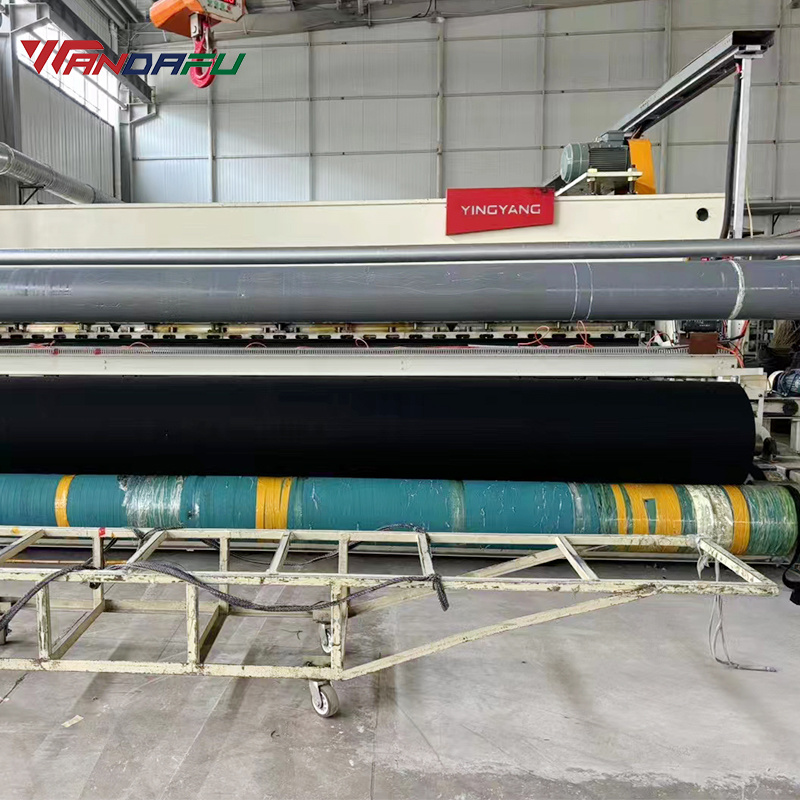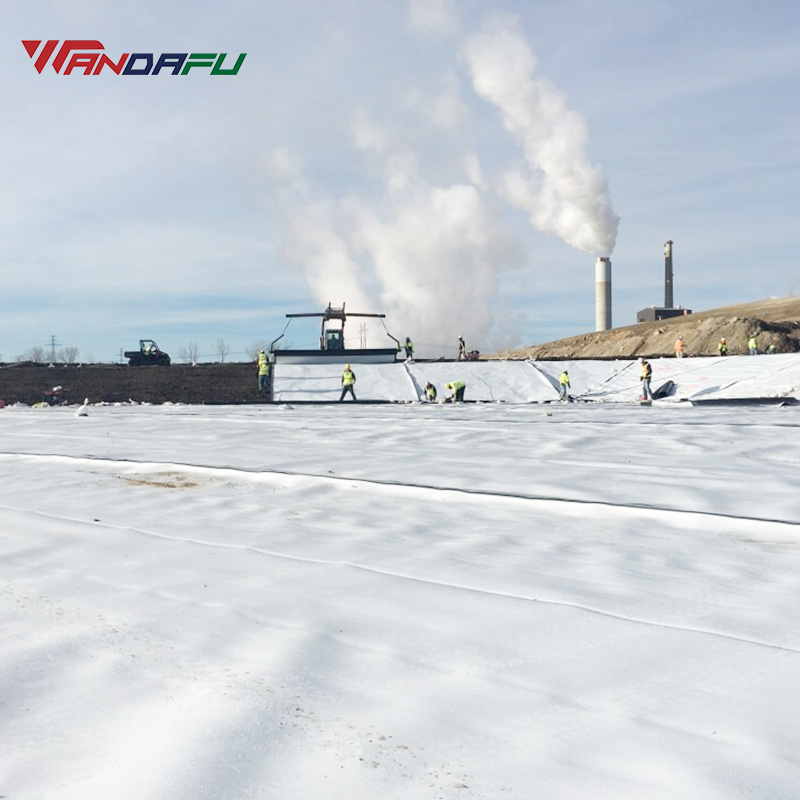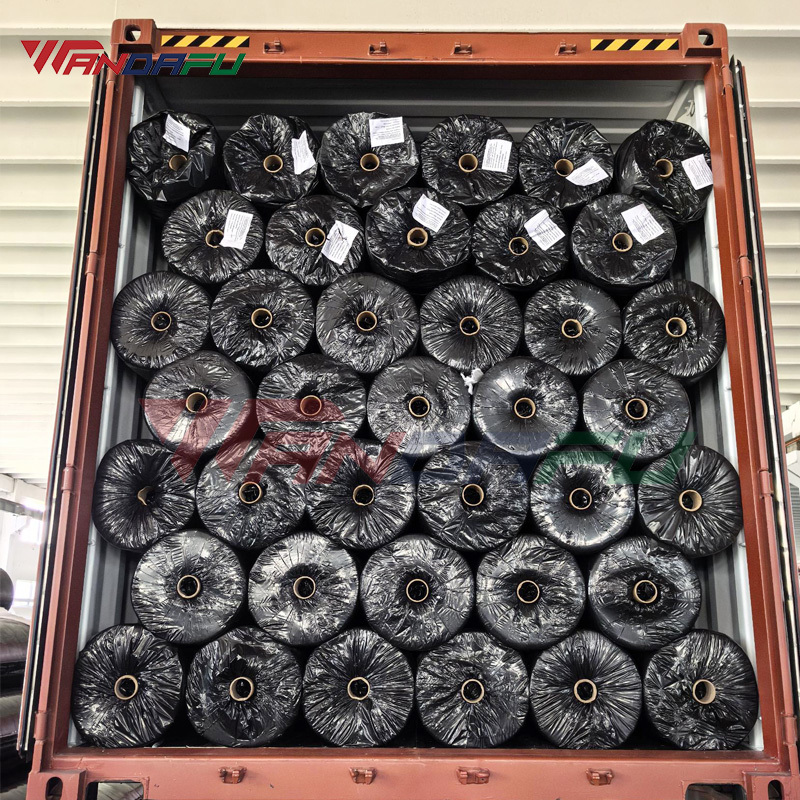
PET Nonwoven Geotextile for Road and Railway Construction in Mexico
Release time:
2025-08-02
PET nonwoven geotextile is engineered from 100% polyester fibers, mechanically bonded through needle punching to ensure superior tensile strength and durability. For enhanced performance, heat bonding can be applied, further reinforcing the fabric’s structural integrity. This geotextile exhibits exceptional resistance to high temperatures and UV degradation, making it ideal for Mexico’s diverse climatic conditions. Its permeable yet robust structure allows for efficient filtration, separation, drainage, and soil stabilization, ensuring long-term reliability in demanding infrastructure projects.
PET nonwoven geotextile is engineered from 100% polyester fibers, mechanically bonded through needle punching to ensure superior tensile strength and durability. For enhanced performance, heat bonding can be applied, further reinforcing the fabric’s structural integrity. This geotextile exhibits exceptional resistance to high temperatures and UV degradation, making it ideal for Mexico’s diverse climatic conditions. Its permeable yet robust structure allows for efficient filtration, separation, drainage, and soil stabilization, ensuring long-term reliability in demanding infrastructure projects.


Our high-performance PET nonwoven geotextile features:
-
Material Composition: 100% polyester (PET) continuous filaments
-
Weight Range: 100-1000 g/m² (customizable for project requirements)
-
Thickness: 0.9mm~5mm (depending on weight)
-
Permittivity: 0.8-3.0 sec⁻¹
-
UV Resistance: ≥70% strength retention after 500 hrs exposure
-
Temperature Resistance: -40°C to +120°C
Installation Methods for Mexican Projects
1. Site Preparation
Before installation, the subgrade must be properly graded and compacted to 95% Proctor density. All sharp objects, vegetation, and debris should be removed to prevent geotextile damage. The surface should be smooth with proper cross-slope for drainage.
2. Geotextile Deployment
-
Unrolling: Deploy rolls along the alignment, allowing 0.5-1.0m overlap at edges
-
Positioning: Ensure proper alignment with 300-600mm extension beyond final structure edges
-
Anchoring: Secure temporarily with sandbags or U-shaped pins (every 2-3m)
3. Seaming Techniques
-
Overlap Method: Minimum 300mm overlap for standard applications (600mm for critical zones)
-
Sewn Seams: Use double-stitched seams with polyester thread for high-stress areas
-
Heat Bonding: For specialized projects requiring continuous barrier protection
4. Cover Material Placement
-
Initial 150mm layer of fill material should be placed carefully (no heavy equipment directly on geotextile)
-
Use tracked equipment or low-ground-pressure vehicles for placement
-
Maintain minimum 2:1 (horizontal:vertical) slope during backfilling
Quality Control Measures
-
Conduct pre-installation roll inspections for defects
-
Verify seam strength with field tensile tests
-
Monitor placement operations to prevent damage
-
Document installation with photographic records
Mexican Climate-Specific Considerations
-
In tropical zones: Increase overlap to account for higher rainfall impact
-
In arid regions: Select higher UV-stabilized formulations
-
For seismic areas: Specify higher elongation fabrics (50-80%)
For detailed technical data sheets and project-specific installation guidelines, request our engineering support package.
Applications in Mexican Infrastructure Projects
1. Road Construction
In Mexico, where varying soil conditions and heavy traffic loads pose challenges, PET nonwoven geotextile is extensively used to reinforce road bases and prevent subgrade failure. By acting as a separation layer between the subsoil and aggregate, it minimizes intermixing, reducing rutting and extending pavement lifespan. Additionally, its superior drainage properties help mitigate water accumulation, a critical factor in regions prone to heavy rainfall.
2. Railway Stabilization
Mexico’s expanding railway networks require durable solutions to ensure track stability. PET nonwoven geotextile is installed beneath rail ballast to distribute loads evenly, preventing track deformation and settlement. Its high tensile strength resists dynamic stresses from passing trains, while its filtration capabilities prevent fine particles from clogging the drainage system, reducing maintenance costs.
3. Erosion Control on Slopes and Embankments
In mountainous and coastal regions of Mexico, soil erosion is a major concern. PET nonwoven geotextile is used to reinforce slopes, embankments, and retaining walls, preventing soil displacement caused by wind and water. When combined with vegetation, it promotes sustainable erosion control, making it a preferred choice for highways, dams, and urban development projects.
4. Landfill and Environmental Protection
To comply with environmental regulations, Mexican landfill projects utilize PET nonwoven geotextile as a protective barrier. It safeguards geomembranes from punctures while facilitating leachate drainage, ensuring long-term containment of hazardous waste. Its chemical resistance makes it suitable for industrial applications, including mining and wastewater treatment facilities.

Why PET Nonwoven Geotextile is the Optimal Choice for Mexico
-
Cost-Effective & Long-Lasting – Reduces construction and maintenance expenses over time.
-
Adaptable to Harsh Conditions – Performs well in Mexico’s tropical, arid, and high-altitude climates.
-
Sustainable Solution – Enhances infrastructure durability while minimizing environmental impact.
For reliable PET nonwoven geotextile solutions tailored to Mexico’s road and railway projects, contact our experts today.
Latest News



